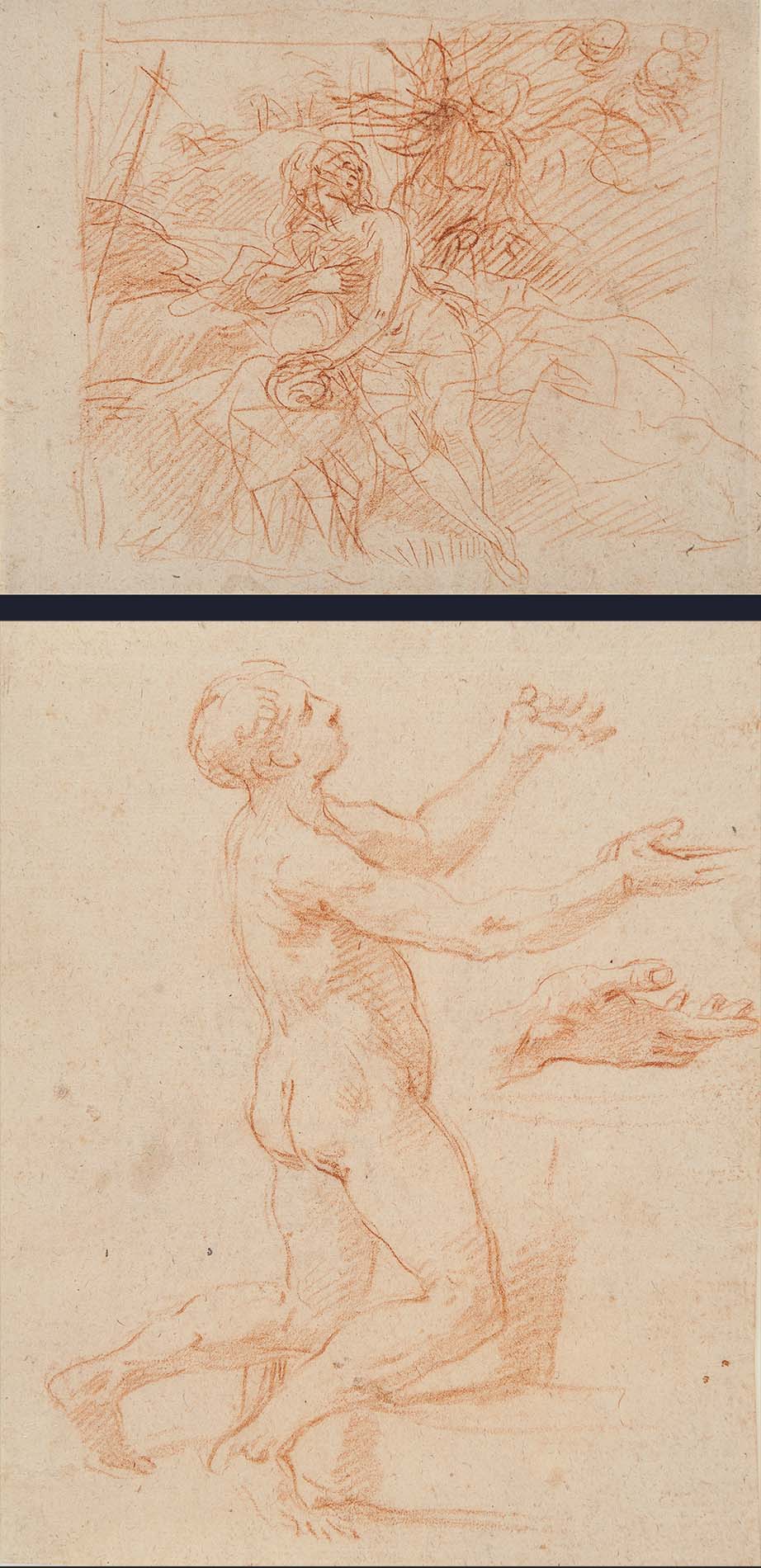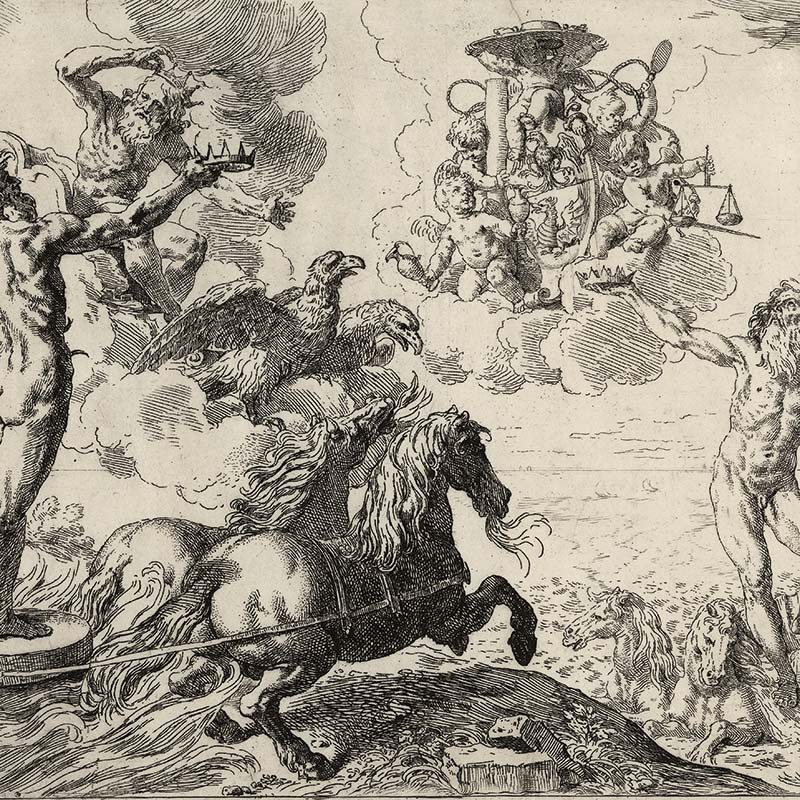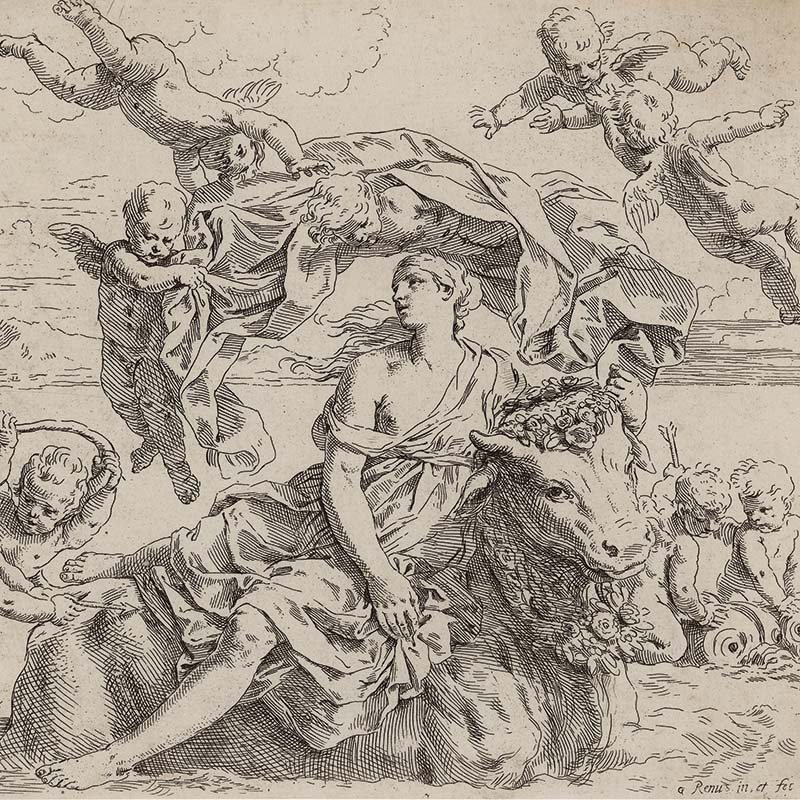Simone Cantarini
Pesaro 1612 - Verona 1648
172 x 214 mm
The recto of our sheet, depicting The Penitent Magdalene, is a preparatory study for the painting ‘The Magdalene’, preserved in Musei Civici of Pesaro.
The sheet is executed in red chalk, the technique preferred by the artist, conducted with a sure ductus, which presents some variations compared with the painting: in the landscape is depicted an Angel that is not present in the painting, also the Magdalene’s face is different with a beautiful ‘pentimento’ and the sensual embrace of the skull, is drown in a different position. Some sheets, now in Brera (inv. 83, nn. 471-477), testify the creative process of the study of this subject, although they cannot be considered strictly preparatory for the pictorial composition.
We know other drawings, for the figure of the Magdalene, for example the sheet of the Prado Museum (inv. F. D. 818), published by Mena Marqués (1983, n. 44, pp. 44-45) very close to our sheet.
This unpublished drawing, is an important addition to the Cantarini’s corpus and have a great interest because it is a preparatory study for a painting well-known and loved by Lanzi.
Price on application
Information on the master
Simone Cantarini was strongly influenced by Guido Reni in both painting and etching. Cantarini, even as a boy showed a predilection for drawing. At about the age of eleven he was apprenticed to a local artist. Sometime later the young artist went to Venice briefly. In about 1635, Cantarini entered Reni`s studio. It was here that he first began to show great promise as an etcher, working closely with Reni. This led to friction: Cantarini was loath to have his work passed off as the master`s and also rebelled against Reni`s attempt to use him to reproduce Reni`s painting in etching. After a violent break with Reni inabout 1637, Cantarini experienced hard times financially, travelling from Pesaro to Rome to Bologna, for a while earning his living chiefly by selling his etchings. In 1647 he worked, briefly and unhappily, for the Duke of Mantua in that city. He suddenly became ill there and left because of his health, reaching Verona, where he died in 1648.
Other works of the master


